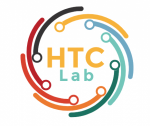E-learning environments are increasingly harnessing large language models (LLMs) like GPT-3.5 and GPT-4 for tailored educational support. This study introduces an approach that integrates dynamic knowledge graphs with LLMs to offer nuanced student assistance. By evaluating past and ongoing student interactions, the system identifies and appends the most salient learning context to prompts directed at the LLM. Central to this method is the knowledge graph’s role in assessing a student’s comprehension of topic prerequisites. Depending on the categorized understanding (good, average, or poor), the LLM adjusts its guidance, offering advanced assistance, foundational reviews, or in-depth prerequisite explanations, respectively. Preliminary findings suggest students could benefit from this tiered support, achieving enhanced comprehension and improved task outcomes. However, several issues related to potential errors arising from LLMs were identified, which can potentially mislead students. This highlights the need for human intervention to mitigate these risks. This research aims to advance AI-driven personalized learning while acknowledging the limitations and potential pitfalls, thus guiding future research in technology and data-driven education.
Latest posts by Ryan Watkins (see all)
- Exploring Student Behaviors and Motivations using AI TAs with Optional Guardrails - April 16, 2025
- AI-University: An LLM-based platform for instructional alignment to scientific classrooms - April 15, 2025
- Interaction-Required Suggestions for Control, Ownership, and Awareness in Human-AI Co-Writing - April 14, 2025
